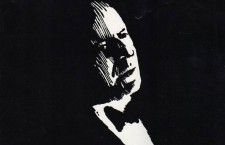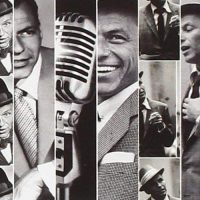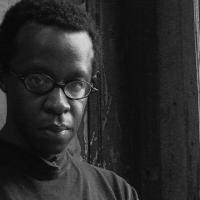NICK DERISO: A weighty recording from a player who should have been long gone, on a subject that shouldn’t afford such texture.
Saxophonist James Moody’s “Young at Heart,” aptly titled, is a shower of invention from out of the clear blue, this burst of romanticism from an aging bebopper that stands as the best-ever instrumental album featuring songs associated with Frank Sinatra.
As arranged by coproducer Gil Goldstein (who expanded Gil Evans’ charts for Miles Davis’ timeless final album, “Miles and Quincy: Live at Montreux”), these are intimate yet swinging sessions. The orchestra moves with the sophistication and verve of Ol’ Blue Eyes’ best collaborators, Nelson Riddle and Billy May.
But it’s Moody, playing in front of these pleasantly nostalgia-free charts, who adds a passion that Sinatra’s 1950s-era sessions guys would never have been allowed. There is a modernity, a directness, in the soloing that makes it all brand new again.
A wartime Air Force veteran, Moody returned to join Dizzy Gillespie’s late 1940s bebop orchestra — sparking a life-long association. He later rejoined Dizzy’s mid-1960s group to much fanfare. In between, Moody worked with Davis and Max Roach, found some of his own fame through a 1949 version of “I’m in the Mood for Love,” then again with a 1952 reworking with a lyric provided by Eddie Jefferson called “Moody’s Mood for Love,” and still later alongside his own septet.
Over the years, Moody would become a complete musician, ever ebullient but with the technique to go with that personality. He later recorded extensively on alto, notably on “I’m in the Mood”; then began exploring the flute with his seven-piece group, which had a pleasant infusion of R&B; and finally added soprano to his arsenal during a 1970s stint in Las Vegas.
Moody, then, had no trouble putting out so complete a record as “Young at Heart,” even at age 71 — five decades after bursting on the New York scene as a tenor man with Gillespie’s big band.
He is just as impressive with an appropriately meloncholy turn on the soprano during “It Was a Very Good Year” as he is on a darker alto solo for “Only the Lonely.” He then tears through a steep, sharp chorus of flute improvisations on “Nightingale on Berkeley Square” — made complete by a sly reference to “I’m in the Mood” by the appropriately named bassist Todd Coolman.
There is a depth of logic, a deep-seated passion, in the choice of notes — and choice of horns — that continues to provide surprises and meaning. Romantic, but (importantly) also effervescent, “Young at Heart” is one of those records you wear out, then buy again.
Now, Moody sings on the opening cut, and that’s an acquired taste — since he talks as much as he croons, something shocking when talking about Sinatra. But Moody’s effort comes so clearly from an emotional place that he can be forgiven even that small misstep.
This was just the second time Moody had performed with strings. He appears with the contemporary trombonist Slide Hampton, who later sat in with Moody during a 75th birthday celebration with the Lincoln Center Jazz Orchestra under the direction of Wynton Marsalis in 2000.
- How Deep Cuts on ‘Music From Big Pink’ Underscore the Band’s Triumph - July 31, 2023
- How ‘Islands’ Signaled the Sad End of the Band’s Five-Man Edition - March 15, 2022
- The Band’s ‘Christmas Must Be Tonight’ Remains an Unjustly Overlooked Holiday Classic - December 25, 2016




